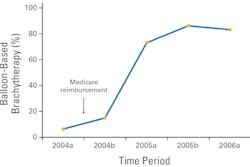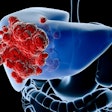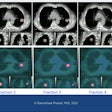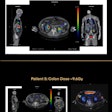Chemotherapy followed by radiation therapy (RT) is the standard treatment for patients with early-stage Hodgkin's lymphoma, and it should remain so, according to a review published February 16 by the Cochrane Collaboration of Oxford, U.K.
A review of the outcomes of 1,245 patients who participated in five randomized clinical trials, published in the Cochrane Library, sought to answer the question of whether radiation therapy, with its risk of causing secondary cancers from radiation exposure, could be eliminated. The conclusion of the multi-institutional team from Denmark, Germany, and Switzerland was that from a short-term perspective, patients who received both treatments were less likely to die or have local recurrence compared to those who only received chemotherapy.
The clinical trials took place from the 1970s to 2004 and used a variety of chemotherapy agents, as well as diverse doses and types of radiation therapy. Initial responses by patients to treatments were equally effective in eliminating cancer in large part or entirely, according to lead author Christine Herbst, MD, of the department of internal medicine of the University Hospital of Cologne in Germany.
However, data from the meta-analysis identified differences in outcomes when patients were followed between two and 11.4 years. Patients who received the combined treatment were 40% as likely to die compared to those who had chemotherapy alone, and the hazard ratio for tumor control was similar, at 41%. Complete response rates were similar between the treatment groups.
Although adding radiation therapy increased five-year tumor control and overall survival, patients were exposed to radiation doses that could cause secondary cancers 10 to 30 years following treatment, the authors noted. The meta-analysis performed did not evaluate long-term risks.
By Cynthia E. Keen
AuntMinnie.com staff writer
February 17, 2011



















